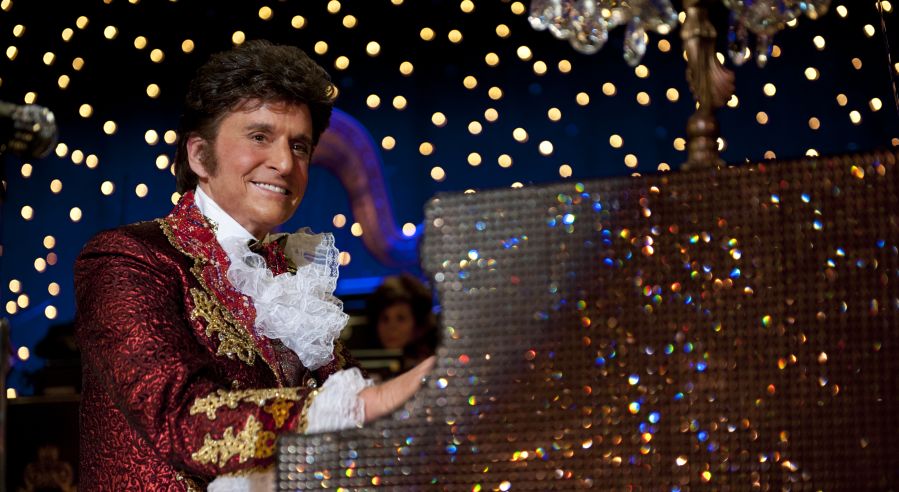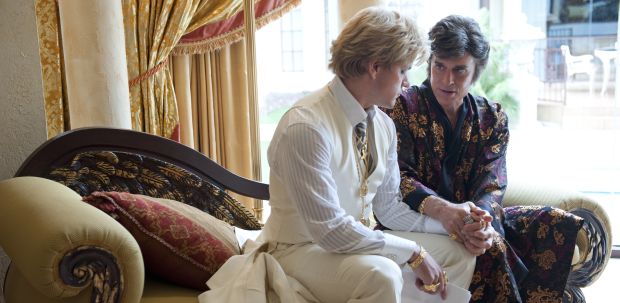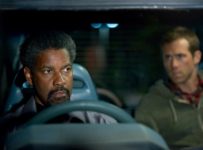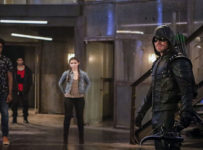The prince of the piano steps back into the limelight as this funny and insightful biopic sheds light on a closely guarded personal life.
[stextbox id=”grey” caption=”Behind the Candelabra (2013)” float=”true” align=”right” width=”200″]
Director: Steven Soderbergh
Writer: Richard LaGravenese
Runtime: 118 minutes
Starring: Michael Douglas, Matt Damon, Dan Aykroyd, Rob Lowe, Debbie Reynolds, Scott Bakula
Distributor: Roadshow Films
Country: US
More info
[/stextbox]
It is difficult to believe that Hollywood studios would reject a film for being “too gay” in the 21st century, although this is exactly what director Steven Soderbergh allegedly discovered when he was trying to gain support for Behind the Candelabra. The biography of the twilight years of Liberace, a stage and screen presence for over four decades before his AIDS-related death in 1987, made its way to HBO television instead, adapting lover Scott Thorston’s memoir Behind the Candelabra: My Life With Liberace. Yet as with all things Liberace, no small screen could contain him, and Soderbergh’s film is now ironically getting a cinema distribution.
Behind the Candelabra is the black comedy union of Boogie Nights and Vertigo, taking us into a hidden world, albeit one that happens to be covered in sequins. In the late 1970s, animal trainer Scott Thorston (Matt Damon) meets Hollywood producer Bob Black (Scott Bakula) at a gay bar, and through him is introduced to Liberace (Michael Douglas). After assisting Liberace with his dogs, Thorston is convinced to move in with the star, and what begins as a fling soon becomes something more. However, Thorston begins to realise that Liberace is crafting him in his own image, insisting on plastic surgery and speaking of adopting Thorston. As Thorston becomes addicted to drugs, and Liberace’s infidelity grows, the rift between them grows.
For much of his career, Liberace’s homosexuality remained a closely guarded secret. As Bakula’s Bob Black comments to a gobsmacked Thorston, surprised that mainstream audiences would enjoy something so camp, “Oh, they don’t know he’s gay.” Richard LaGravenese‘s dark humour leaves little doubt as to that fact, instead choosing to comment on how a lifetime of this kind of repression led to loneliness, narcissism and other celebrity afflictions. Rarely has Liberace’s story been told with this much humour and warmth, and while it may be occasionally seen as mocking the subject, the satirical gaze is focused not so much on the man himself but more broadly on the business of show. What at first seems gaudy and ripe for ridicule on introduction becomes increasingly commonplace by the second half. Indeed, this is how Soderbergh makes the audience fall into the same trap as Thorston.
The performances are outstanding across the board, Douglas in particular disappearing into the mirrored cloak of the flamboyant pianist. He never crosses the boundary into caricature, despite the obvious affectations and costumes. There’s a real sense of pathos to his portrayal, even more impressive due to the film being told mostly through Thorston’s increasingly unflatteringly point of view. Damon likewise allows himself to be put through the ringer for this outing, porking out before going on a streak of weight loss and plastic surgery that makes staring at his face a journey into uncanny valley. Populated with a cast of rounded supporting roles, with Dan Aykroyd and Bakula shining in particular, and an almost unrecognisable Debbie Reynolds as Liberace’s heavily accented mother. Yet the biggest tip of the feathered cap must go to Rob Lowe. Barely able to open his overworked eyes, his ubiquitous plastic surgeon steals every scene with a precision scalpel.
Made for television on a relatively small budget of $23 million, Soderbergh’s talent with getting the most out of an outstanding cast and a wickedly funny script are evident in Behind the Candelabra. The lush set design and lavish attention to detail belies its cheaper price tag, enveloping us with its meticulous adherence to the spirit of Liberace. If this is truly the last Soderbergh film to hit cinemas, it’s certain a fitting full circle for a filmmaker who started his career filming sex and lies in the age of videotapes.
Behind the Candelabra is released in Australia on 25 July 2013 from Roadshow Films.






